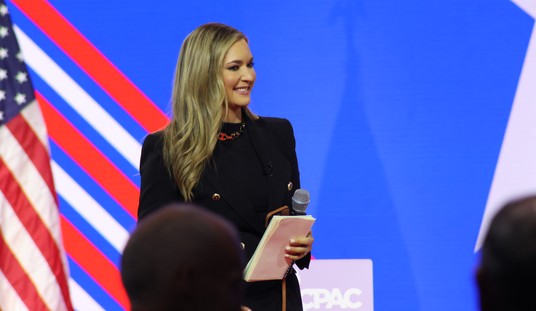Call off the hysterics. Despite what the New York Times’ Charlie Savage thought he’d divined on Tuesday from a Department of Justice job posting, the DoJ does not have a plan to operate a new project to dismantle affirmative-action policies in Academia. Savage reported that the job posting “suggests” that the project would be conducted on behalf of white applicants and would be run out of the political side of Justice’s Civil Rights Division:
The Trump administration is preparing to redirect resources of the Justice Department’s civil rights division toward investigating and suing universities over affirmative action admissions policies deemed to discriminate against white applicants, according to a document obtained by The New York Times.
The document, an internal announcement to the civil rights division, seeks current lawyers interested in working for a new project on “investigations and possible litigation related to intentional race-based discrimination in college and university admissions.”
The announcement suggests that the project will be run out of the division’s front office, where the Trump administration’s political appointees work, rather than its Educational Opportunities Section, which is run by career civil servants and normally handles work involving schools and universities.
As it turns out, nearly nothing about this was true. It took the DoJ nearly twenty-four hours to respond, but their spokesperson explained that the job was to handle one complaint — and that had nothing to do with white applicants:
The Times story inferred that an internal personnel posting seeking volunteers to investigate “possible litigation related to intentional race-based discrimination in college and university admissions” was meant to look at policies discriminating “against white applicants.”
The Daily Caller first reported that a DOJ source said this Times article “appears to assume it deals with white students without evidence.” DOJ spokeswoman Sarah Isgur Flores later put out a statement confirming this.
“Press reports regarding the personnel posting in the Civil Rights Division have been inaccurate. The posting sought volunteers to investigate one administrative complaint filed by a coalition of 64 Asian-American associations in May 2015 that the prior Administration left unresolved,” Flores wrote. “The complaint alleges racial discrimination against Asian Americans in a university’s admissions policy and practices.”
That university turns out to be Harvard, as the student newspaper reports today. It also notes that the NYT botched the original reporting on the job opening:
The Justice Department’s Civil Rights Division will investigate allegations that Harvard discriminates against Asian Americans in its admissions process, according to a department spokesperson.
The New York Times reported Tuesday that the Trump administration intended to up the Justice Department’s efforts to target universities whose admissions policies it deemed discriminatory against white applicants, citing an internal department document obtained by the Times. The document sought to recruit lawyers for the new project, according to the Times.
But on Wednesday, a Justice Department spokesperson said the department’s investigation would be more narrowly tailored, focusing on a single complaint filed in 2015 accusing Harvard in particular of discriminating against Asian Americans in its undergraduate admissions processes.
“The posting sought volunteers to investigate one administrative complaint filed by a coalition of 64 Asian-American associations in May 2015 that the prior Administration left unresolved,” Justice Department spokesperson Sarah Isgur Flores said in a statement Wednesday evening. “This Department of Justice has not received or issued any directive, memorandum, initiative, or policy related to university admissions in general,” the statement continues.
The NYT catches up with its own story today on this complaint, but never mentions that its original story turned out to be false. The headline still suggests that the case heralds a broader fight against affirmative action on campuses, but offers as much evidence for that as it did for its Tuesday allegation that the DoJ was looking to protect white people, which is to say none at all except reportorial speculation. It’s true that the issues of affirmative action and its impact on Asian-American students have been percolating for quite some time; Minding the Campus, for instance, has been tracking that for several years. However, this is still one complaint involving one specific campus and their outcomes, and the case doesn’t directly challenge affirmative action in general but only its specific application at Harvard.
After the NYT published its highly speculative and arguably debunked article (which they have yet to correct or update, by the way), a number of media outlets swallowed the story whole rather than exhibit some journalistic skepticism about its thin sourcing. As I write in my column at The Fiscal Times, there were plenty of reasons for skepticism — especially on the supposed strategy to attack affirmative action as a means to satisfy Trump’s base:
While the court ruled in Schuette that government was not required to keep affirmative action programs, it then ruled in Fisher last year that affirmative action meets constitutional muster. Justice Anthony Kennedy, writing for the majority, declared that the state of Texas had a “compelling interest that justifies race in college admissions” in gaining “the educational benefits that flow from student diversity.” …
A frontal assault on affirmative action through lawsuits against universities and colleges does not appear to be the most effective or fruitful strategy. Nor does it immediately impact the Rust Belt’s working-class families that form Trump’s base. If the administration wanted to take on affirmative action, they could do so in the executive branch first. In signing an omnibus bill this spring, Trump added a statement that hinted at ending set-asides for gender and ethnic-based grants. Trump could also end set-asides for women and minorities in federal contracts without getting the Department of Justice involved at all. That might have a more direct impact on the voters of Trump’s base, although it might not all be positive.
An even more popular approach with those voters would be to rein in the Equal Employment Opportunity Commission (EEOC), which has recently expanded its traditional mandate from discrimination against women and minorities to transgender status, gender identity, and sexual orientation. The EEOC’s website notes that the merit rate for complaints in FY2015 was only 18.1 percent, suggesting that the expanded mandates are not capturing a lot of actual injustice. That approach would also avoid tinkering with the DOJ’s Civil Rights Division, and might address frustrations from smaller business owners more directly.
There’s another reason for some healthy skepticism, too. If the Trump administration planned to take on affirmative action as a means of firing up its base, they would have announced those efforts themselves rather than rely on The Times to figure it out from an obscure job posting.
Those options would certainly set off alarm bells too, but they’d be less vulnerable to legal challenges, as Schuette proves. In the future, perhaps media outlets will spend less time speculating about grand strategies from a single job posting and report on what’s actually happening, so we can have debates about reality rather than fantasies.
By the way, it’s not just Trump’s base who thinks that affirmative action in academic admissions is an anachronism. Check out this Survey USA poll on the topic, in which over three-quarters of respondents believe that all applicants should be treated the same, no matter which ethnicities get paired off against each other. Where did this poll take place — the South, the Rust Belt, or the Midwest? How about … San Francisco?
A whopping 72 percent said state universities should treat all applicants the same regardless of background.
Just 14 percent say certain populations should get preferential treatment.
In the Bay Area, only 10 percent think race should be a factor in admissions.
And that’s from a poll taken the day that the story blew up as a supposed Trump-administration abomination.







Join the conversation as a VIP Member